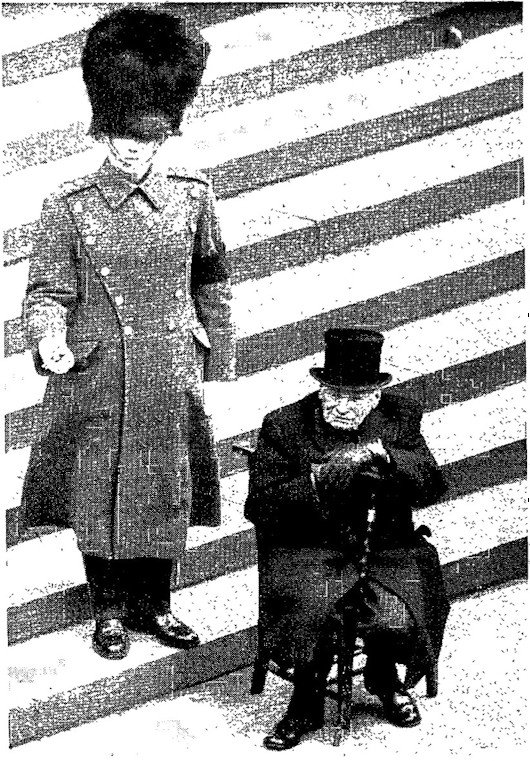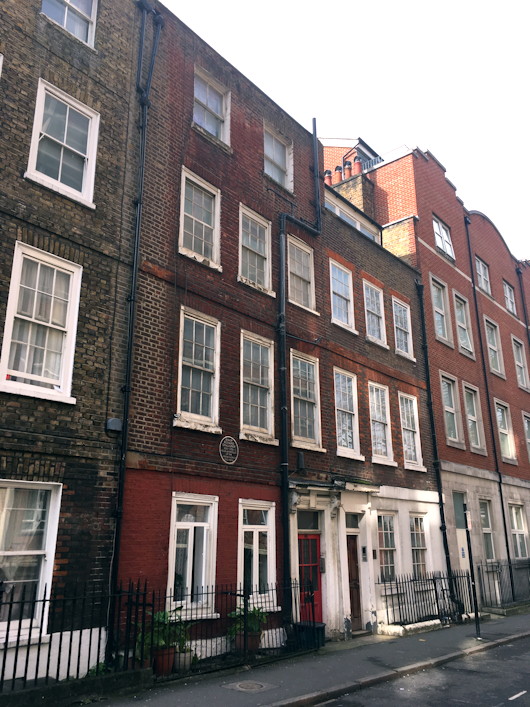2017 March
About Andrew Cusack
 Writer, web designer, etc.; born in New York; educated in Argentina, Scotland, and South Africa; now based in London.
Writer, web designer, etc.; born in New York; educated in Argentina, Scotland, and South Africa; now based in London. read more
News
Blogs
Reviews & Periodicals
Arts & Design
World
France
Mitteleuropa
Knickerbockers
Argentina
The Levant
Africa
Cape of Good Hope
Netherlands
Scandinavia
Québec
India
Muscovy
Germany
Academica
Gandhi in Fascist Rome
Returning home to India from the second London Round Table Conference in 1931, the genial Indian nationalist leader Mr Gandhi decided to call in on that most ancient, venerable, and eternal city of Rome. He accepted the invitation to stay as a guest of the aviation pioneer (and later fascist senator) General Maurizio Moris and, purporting to be of something of a spiritual aficianado, hoped to be granted an audience with the Holy Father. Gandhi had by then adopted an unwavering costume of sandals and homespun which was thought unsuitable for the papal court, and Pius XI — in many ways a wise man — decided against the Indian’s request. Mussolini, however, was less fussy and granted the “Mahatma” a private audience on the very evening of his arrival.
In some ways they were similar: Gandhi and Mussolini shared a gift for the theatrical as well as an unshakeable self-belief. Mussolini fancied himself the leader of his people, despite the King above him, and Gandhi thought likewise of himself despite the entire apparatus of the Raj standing apart from and above him. Gandhi, however, never stooped to the level of the buffoon, unlike his Italian friend, and (even after independence) wisely abjured himself from ever taking on the actual responsibilities of government and state office. (more…)
The Earl Attlee

At Chartwell one weekend in Churchill’s presence, Sir John Rodgers made the mistake of referring to Clement Attlee, wartime deputy prime minister and postwar prime minister, as “silly old Attlee”. Churchill was having none of it.
“Mr Attlee is a great patriot,” he said. “Don’t you dare call him ‘silly old Attlee’ at Chartwell or you won’t be invited again.”
The leader of the Conservative party and the leader of the Labour party were obvious political rivals but developed a great bond by their shared experience in the cross-party War Cabinet.
En route to a dinner party the other night I happened to run into Attlee’s greatgrandson (an old friend) on the upper deck of the 414 bus. It reminded me of this photo (above) printed in the Observer. When the great bulldog went on to his eternal reward in 1965, the incredibly frail Earl Attlee insisted on attending the state funeral in St Paul’s Cathedral. Though younger, he only managed to outlive him by two years.
Attlee had been raised to the House of Lords (where he spoke against Britain joining the EEC) in 1956 and, rather appropriately, he chose as the motto for his coat of arms Labor vincit omnia — Labour conquers all.
Challoner’s House

Challoner’s House — Rather humble for an episcopal palace, but such was the function of No. 44, Old Gloucester Street in Holborn during the time of Bishop Richard Challoner.
If it seems an odd spot for London’s Catholic bishop, it can be explained by its close proximity to the chapel of the Sardinian Embassy off Lincoln’s Inn Fields. At this time, of course, the Mass was still illegal and the only places Catholics in London could worship were the embassies of the Catholic nations. To protect the underground bishop, the house in Old Gloucester Street was actually rented in the name of his housekeeper, Mrs Mary Hanne.
After a perfect breakfast on Saturday morning the sun was shining so I decided the three-and-a-half miles home from St Pancras were best managed on foot. If architectural or historical curiosities are your fancy then foot is the way to travel, and so it was by pure chance that I stumbled upon No. 44. It seemed particularly appropriate that the night before a whole gang of us — Brits, Swedes, Italians, etc. — had been drinking in the Ship Tavern in Holborn where Bishop Challoner was known to offer the occasional clandestine Mass. (more…)
Search
Instagram: @andcusack
Click here for my Instagram photos.Most Recent Posts
- Silver Jubilee November 21, 2024
- Articles of Note: 11 November 2024 November 11, 2024
- Why do you read? November 5, 2024
- India November 4, 2024
- The Lithe Efficiency of the Old Constitution November 4, 2024
Most Recent Comments
Book Wishlist
Monthly Archives
Categories



